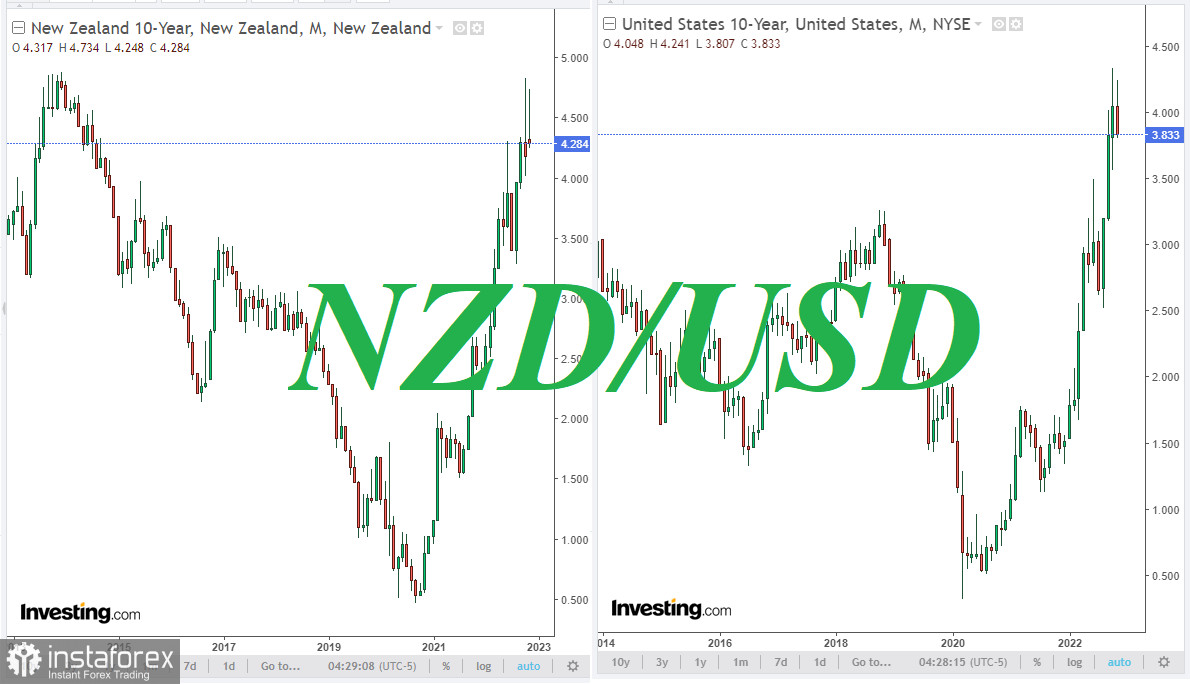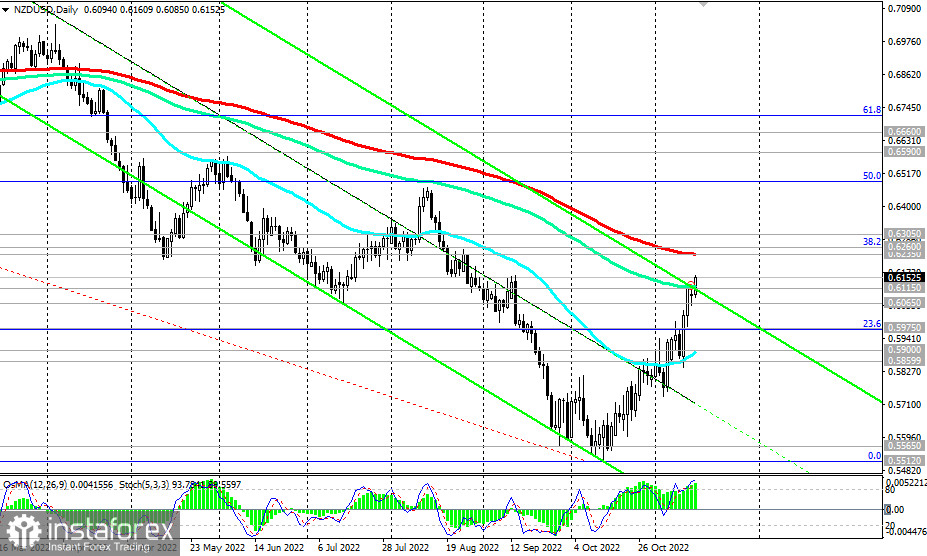According to economists, and as follows from the comparative analysis, New Zealand currently has the highest bond yield among the 10 largest economically developed countries.
If you look at the pictures and graphs below, you can see that the yield on 10-year New Zealand bonds is currently 4.284% (last month, it reached an almost 10-year high of 4.825%), and, for example, US bonds - 3.833%.

Considering also the relative stability (again in comparison with the economies of the largest economically developed countries) of the New Zealand economy, the low level of coronavirus infection during its peak in the world, and the growth of inflation expectations and the inflation rate itself in the country, economists expect further steps from the Reserve Bank of New Zealand to tighten monetary policy. All of the above together creates prerequisites for further strengthening of the New Zealand dollar and the growth of the NZD/USD pair, especially against the backdrop of the US dollar, which weakened greatly in recent weeks.
As shown by the recent survey of monetary conditions by the RBNZ, 2-year inflation expectations stand at 3.62% versus 3.07% previously. Inflation expectations for 1 year ahead also jumped to 5.08% (against 4.86% in the 3rd quarter of this year).
In particular, the food price index, published by the Statistics New Zealand last week, rose by +0.8% in October (against +0.4% growth in the previous month). The economy of New Zealand depends on the export of agricultural and food products, and the growth of world prices for them has a positive effect on the country's foreign trade balance, which, in turn, is a source of replenishment of the state budget. By the way, at the beginning of next week (on Monday), fresh data on the trade balance of New Zealand will be presented.
As Statistics NZ reported last month, the consumer price index for the 3rd quarter turned out to be +2.2% (against the forecast of +1.6% and the previous value of +1.7%). The annual CPI came out with a value of +7.2% (against the forecast of +6.6% and the previous value of +7.3%). After the publication of these data, the NZD/USD pair received a new impetus for growth.
Rising inflationary expectations are resurrecting hopes for a hawkish RBNZ hike this month and next, economists say, which we know is bullish for the national currency under normal or relatively stable economic conditions.
Today after 14:00 (GMT), the latest data on prices for dairy products from Global Dairy Trade will be published.
The economy of New Zealand still has many signs of raw materials, with the bulk of New Zealand's exports coming from dairy products and food products of animal origin (27%, as of 2020). Growth in world prices for dairy products (+0.5% expected) may have a positive impact on NZD quotes and the NZD/USD pair, becoming another argument in favor of further tightening of the RBNZ monetary policy.
In October, RBNZ leaders raised the rate by another 50 bps (to the level of 3.50%) and made it clear that they are set to further tighten monetary policy.
Economists expect the RBNZ to raise its interest rate again at its November 23 meeting, to 4.00%. This should give the NZD new momentum to strengthen.
At the same time, we are witnessing an extraordinary situation in the financial markets. The central banks of the leading economically developed countries have embarked on the path of raising their interest rates. However, inflation in their national economies is still high and, in many cases, continuing to rise, while the tightening of monetary conditions itself has a negative impact on economic growth.
The RBNZ, like other major world central banks, is in the same difficult situation—inflation continues to grow, on the one hand, and the risks of an economic slowdown, on the other.
Inflation in New Zealand will remain well above the RBNZ target range of 1%–3% until at least the end of 2023, economists say. The average inflation rate is expected to be 6.5% this year before falling to 3.5% in 2023. In July, this forecast assumed 6.0% and 2.8%, respectively.

In the meantime, the NZD/USD pair continues to develop an upward correction, having reached the zone of key long-term resistance levels 0.6115, 0.6235. If the upward correction does not end near these levels and there is no rebound, then a breakdown of the resistance levels 0.6260, 0.6305 significantly increases the chances of NZD/USD returning to a long-term bullish trend.





















